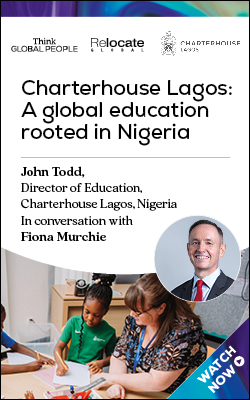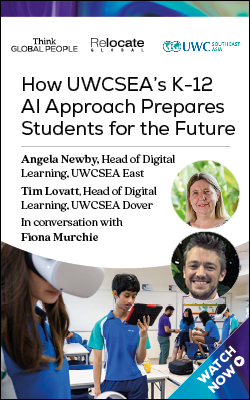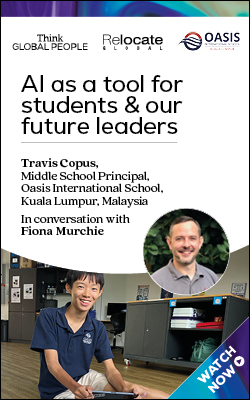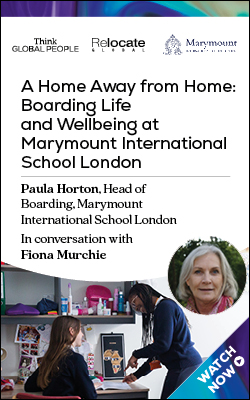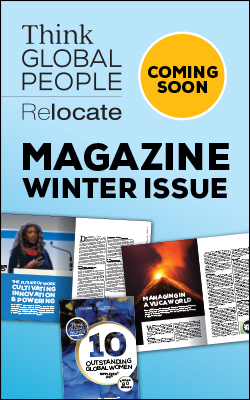Hybrid working: Creating new, high-trust workplace cultures
Hybrid working emphasises efficiency and cost savings: both for employees who can ditch the regular commute and for organisations saving on office costs. Yet creating an effective remote or hybrid workplace culture that aligns with business goals and fosters trust can be challenging, reports Marianne Curphey.

This article is taken from the Autumn 2024 issue of
Think Global People magazine
Click on the cover to access the digital edition.The news that many larger organisations are asking staff to return to on-site working has polarised views among managers and HR teams with a global workforce. Among the companies requiring physical attendance are THG, Salesforce, Boots, Tesco, ASOS, Barclays, the Civil Service and Manchester United.According to Gartner, over the last 12 months, 63% of HR leaders report increasing expectations for employees to return to offices. Many organisations that have encouraged on-site work but experienced low compliance are resorting to return-to-office (RTO) mandates. However, 74% of HR leaders cite RTOs as a source of conflict and carrying steep costs.Gartner says RTOs are particularly unpopular because:
- employees value a healthy work-life balance
- high performers, women and millennials prize flexibility
- high performers may feel especially resentful about mandates, particularly if they maintained performance or over-delivered during the pandemic
- employees may view mandates as a sign of mistrust from management.
How global managers find balance on hybrid working?
Jonathan Evans, the CEO of Discovery, helps companies in the UK, Europe and North America like AB InBev, Gatwick Airport, Intercity, Merlin Entertainment Group and Furniture Village, build better workforces. He is an expert in HR leadership, workplace culture and productivity, especially at large companies.“There is much debate on remote work versus returning to the office, and the distinction between efficiency and effectiveness is pivotal in this conversation,” he explains. “While efficiency involves completing tasks with the least waste of time and resources, effectiveness focuses on achieving the desired outcomes. It is possible for employees to perform tasks efficiently, but to miss the mark in terms of business objectives – essentially, doing the wrong thing well.”For example, remote work can lead to high efficiency because of reduced commuting time and fewer office distractions. However, this does not automatically translate to effectiveness if it leads to isolation or misalignment with company goals.The distinction highlights the need for clear communication of business objectives and strategic goals. This ensures that employee efforts are not only efficient, but also aligned with the desired outcomes.The importance of supportive cultures
For Jonathan Evans, company culture plays a crucial role in balancing efficiency and effectiveness. A positive culture fosters collaboration, innovation and a sense of belonging, which are all essential for achieving both efficiency and effectiveness.“In-person interactions often facilitate spontaneous conversations and mentorship, particularly important for those early in their careers who are developing their skills and understanding workplace norms,” he says. “Younger employees, or those new to the workforce, benefit greatly from the mentorship and immediate feedback that a physical office environment can provide. These interactions help them build the resilience and social skills necessary for long-term career success.”Then there is the discussion around wellbeing and employee burnout. The shift to remote work has brought attention to the importance of mental health and work-life balance. “While remote work offers flexibility, it can also blur the lines between personal and professional life, leading to burnout,” Jonathan says. “Organisations must support their employees by promoting a culture that values wellbeing, offering resources such as mental health support and encouraging a healthy work-life balance.”For early-career employees, who may lack the established routines and support networks of more seasoned professionals, the challenges are particularly acute. They require guidance, opportunities for social interaction and structured development programmes to help them grow within the company. A supportive work culture that prioritises wellbeing and development can significantly enhance their effectiveness, aligning their personal growth with the organisation's strategic goals.“A hybrid model, combining both in-office and remote work, is increasingly seen as an optimal solution,” says Jonathan. “It allows employees to benefit from the flexibility of remote work while also leveraging the collaborative and social aspects of the office. According to the World Economic Forum, many companies are moving towards this model to maximise productivity and employee wellbeing.”Job crafting – a new way to enhance employee engagement?
Dr Esther Canonico of Imperial College Business School is a well-known expert in employee relations, organisational behaviour and flexible working. As well as spending many years as a remote worker herself, her academic research has long looked into the impact and implications of remote and flexible working for both organisations and employees. It focuses on productivity, wellbeing and satisfaction, as well as the mechanics of how companies can manage these working arrangements successfully.Dr Canonico’s work has included long-term surveys of over 500 staff and managers, investigating the impact of remote work on employee output and wellbeing. It finds strong positives for both of these, but only when companies can manage the relations effectively.Measures such as ensuring remote staff still feel connected to the company, relationships between employees remain solid, and effective management of both in-person and remote staff so that all staff receive equal career prospects, attention and opportunities, are vital. Her work advises managers on how to do exactly this. She suggests that if employees report a high level of job satisfaction, motivation and engagement, then it can be considered that they work in a happy work environment.“A key driver of job satisfaction is the sense of job autonomy and control that employees have over various aspects of their work, including their schedule and location,” she says. “To improve employee engagement and motivation, managers can facilitate employees being empowered to shape their jobs to make them more meaningful and enjoyable.” She suggests that forcing employees to lose the work flexibility they prefer or need could negatively affect their performance. There is also some misconception about working from home, as it doesn't necessarily mean doing so full-time. “Research indicates that, ideally, working two or three days at the office in a five-day week is optimal in terms of the benefits it brings to employees and employers,” she says.“Additionally, for homeworking to be effective, it needs to be voluntary. Overall, the main idea is that employers should offer working practices that address employees’ needs and preferences to maximise employee productivity.”Since having a more flexible working policy can positively impact employee motivation, engagement, job satisfaction and job performance, there is a strong business argument for allowing flexibility. One reason for these effects, she says, is that employees may perceive an increase in organisational support, meaning they feel that their organisation cares about them. Research also suggests that these positive effects extend not only to employees who use flexible working practices, but also to those who are aware of them although do not use them.“Employees having the freedom to shape their work sounds like job crafting,” she says. “Job crafting involves employees making changes to their job demands and resources to create a more meaningful, engaging and satisfying work experience. Organisations can foster job-crafting behaviour by creating supportive conditions by recognising individuals as proactive agents who shape their jobs and modify their job characteristics. Since job crafting includes individual proactivity and self-initiated job changes, it can complement traditional top-down job redesign approaches.”Read related articles
- Global mobility supply and demand: What is happening in the corporate world?
- Working remotely abroad: policy and talent implications
- What your staff want you to know about remote working
A culture of trust from the top down
Dr John Blakey, an executive coach and author of ‘Force for Good: How to thrive as a purpose-driven leader’ (August 2024, Kogan Page) is the founder of The Trusted Executive, a leadership development consultancy helping organisations to create a new standard of leadership based on trust. As a pioneering executive coach, Dr Blakey has a unique track record as a global thought leader and former FTSE 100 international managing director, who has also supported those who nurture the performance of high-level and high-profile sports teams.He believes managers should focus on creating a ‘results-only work environment’ (ROWE), whether that is working from home, in the office or hybrid working. “Successful teams create a ‘results-only work environment’, regardless of location, to boost levels of productivity, engagement and motivation,” he says. “That is what is needed to boost productivity now we’re outside of the crisis-driven ‘we’re all in it together’ mindset from the pandemic.“Employees need to be trusted to choose when and where we work. Fundamental to enabling this culture is that all team members are rewarded on outcomes, not activities.”Dr Blakey says managers who thrive in any location have learnt they need to rely on the power of trust, rather than trusting in power as with traditional leadership. With a workforce that increasingly doesn’t want to be told what to do, people need to be empowered to be trusted in the job they do and deliver the results required of them. By creating new, high-trust workplace cultures, organisations can deliver greater freedom to individuals, maintain team cohesion and produce important organisational and productivity goals.“Leaders need to move more to developing their trust-building skills and ROWE tools,” he says. “Old-style leaders who insist on employees working in the office 100% of the time still rely on the ‘command and control’ approach. Many employees are now voting with their feet and choosing employers who offer more flexibility and trust when it comes to getting the work done, while those employers offering greater flexibility are retaining employees more easily.”What is productivity and how can it be measured effectively?
Liz Sebag-Montefiore, director of coaching and mentoring consultancy 10Eighty and an executive coach, says that as larger organisations push for a return to the office, it is crucial to examine what environments foster productivity and satisfaction for employees and organisations. “Productivity is often measured by the output relative to the input of resources,” she explains. In a workplace context, it encompasses not only the quantity of work produced, but also the quality, efficiency and overall effectiveness of the workforce.Factors that influence productivity:- Employees who have control over their work schedules tend to be more motivated and productive. Flexibility can lead to better work-life balance, reducing burnout and increasing job satisfaction.
- A workspace that fosters easy communication and collaboration can enhance productivity. This includes both in-person interactions and virtual tools for remote teams.
- A comfortable and conducive physical or virtual work environment plays a significant role. This includes ergonomic set-ups, access to necessary technology and a quiet space for focused work.
- Leadership styles that support autonomy, provide clear goals and offer constructive feedback tend to enhance productivity. Managers should focus on results rather than micromanaging processes.
Balancing flexibility and structure for healthy, productive teams Liz Sebag-Montefiore, director of coaching and mentoring consultancy 10Eighty and executive coach, suggests employers:
- offer remote work options and flexible hours to accommodate diverse employee needs
- ensure that remote workers have access to the necessary tools and technology
- create an inclusive culture that values results over physical presence
- set clear objectives and offer regular feedback to keep employees aligned with business goals
- support continuous learning and development to keep employees motivated and engaged.
Hybrid work can help you attract top talent
Neat is a Norwegian video technology company with a global hybrid workforce. It provides a complete portfolio of workplace hardware and services. Jean Bays, head of people at Neat, says it would be “an understatement” to suggest that the office – once the core of a workplace – has become somewhat of a battleground for the workplace debate in recent years. “Hybrid work, with its promise of flexibility and autonomy, has captured the hearts of employees and challenged the norm for employers,” she says.A study by McKinsey found that 58% of employees reported increased productivity in hybrid settings. Many also reported improved wellbeing and greater job satisfaction. “Leaders who truly understand the pulse of their workforce are embracing hybrid models,” says Jean Bays. “They recognise that by empowering employees with the freedom to choose where and when they work, they can unlock more creativity, innovation and engagement.” The benefits of hybrid work extend beyond individual productivity. It is a powerful tool for attracting and retaining top talent, especially among younger generations who prioritise flexibility. Moreover, it can contribute to a more diverse and inclusive workplace by accommodating employees with disabilities or caregiving responsibilities. “The implications of hybrid working for international business and mobility are huge,” she says. “Not only does it have the potential to redefine global collaboration, breaking down geographical barriers and creating cross-cultural exchange, but it can also encourage talent acquisition from a wider pool of candidates, regardless of location.”She argues that the future of work is hybrid and businesses that fail to adapt will find themselves at a competitive disadvantage. “It is time to focus on creating work environments that truly support employee success, diversity, and organisational goals.”
Find out more about the Think Global People and Think Women community and events.

Subscribe to Relocate Extra, our monthly newsletter, to get all the latest international assignments and global mobility news.Relocate’s new Global Mobility Toolkit provides free information, practical advice and support for HR, global mobility managers and global teams operating overseas.
©2025 Re:locate magazine, published by Profile Locations, Spray Hill, Hastings Road, Lamberhurst, Kent TN3 8JB. All rights reserved. This publication (or any part thereof) may not be reproduced in any form without the prior written permission of Profile Locations. Profile Locations accepts no liability for the accuracy of the contents or any opinions expressed herein.













